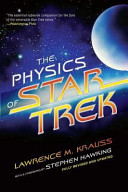Metaphor for the Uncertainty Principle
There is a slightly flawed yet very satisfying physical argument that gives some heuristic understanding of the uncertainty principle. Quantum mechanics endows all particles with a wavelike behavior, and waves have one striking property: they are disturbed only when they encounter objects larger than their wavelength (the distance between successive crests). You have only to observe water waves in the ocean to see this behavior explicitly. A pebble protruding from the surface of the water will have no effect on the pattern of the surf pounding the shore. However, a large boulder will leave a region of calm water in its wake.
So, if we want to “illuminate” an atomthat is, bounce light off it so that we can see where it iswe have to shine light of a wavelength small enough so that it will be disturbed by the atom. However, the laws of quantum mechanics tell us that waves of light come in small packets, or quanta, which we call photons (as in starship “photon torpedoes,” which in fact are not made of photons). The individual photons of each wavelength have an energy inversely related to their wavelength. The greater the resolution we want, the smaller the wavelength of light we must use. But the smaller the wavelength, the larger the energy of the packets. If we bombard an atom with a high-energy photon in order to observe it, we may ascertain exactly where the atom was when the photon hit it, but the observation process itself that is, hitting the atom with the photonwill clearly transfer significant energy to the atom, thus changing its speed and direction of motion by some amount.
Notes:
Krauss explains the principle using waves.
Folksonomies: metaphor quantum physics uncertainty principle
Taxonomies:
/sports/swimming (0.441662)
/science/physics/optics (0.425123)
/sports/canoeing and kayaking (0.383584)
Keywords:
uncertainty principle (0.920406 (positive:0.348150)), Uncertainty Principle Krauss (0.878309 (negative:-0.255399)), wavelength (0.789737 (positive:0.643536)), quantum mechanics (0.745712 (neutral:0.000000)), waves (0.466140 (positive:0.012442)), individual photons (0.463089 (neutral:0.000000)), photon torpedoes (0.456299 (negative:-0.217124)), atom (0.453221 (positive:0.558529)), heuristic understanding (0.442814 (positive:0.603549)), pebble protruding (0.442392 (negative:-0.697130)), high-energy photon (0.441604 (positive:0.473523)), water waves (0.438900 (negative:-0.275391)), successive crests (0.438308 (positive:0.216092)), physical argument (0.430554 (positive:0.603549)), striking property (0.411424 (positive:0.277837)), wavelike behavior (0.375756 (neutral:0.000000)), large boulder (0.373658 (positive:0.490669)), calm water (0.368242 (positive:0.490669)), small packets (0.365480 (neutral:0.000000)), observation process (0.356098 (positive:0.330728)), significant energy (0.327198 (neutral:0.000000))
Entities:
uncertainty principle:FieldTerminology (0.851759 (positive:0.174075)), Krauss:Person (0.385030 (negative:-0.255399))
Concepts:
Quantum mechanics (0.950433): dbpedia | freebase | opencyc
Photon (0.761791): dbpedia | freebase
Light (0.686414): dbpedia | freebase | opencyc
Physics (0.653874): dbpedia | freebase | opencyc
Electromagnetic radiation (0.544128): dbpedia | freebase | opencyc
Fundamental physics concepts (0.513435): dbpedia
Uncertainty principle (0.511158): dbpedia | freebase
Electron (0.504142): dbpedia | freebase | opencyc






